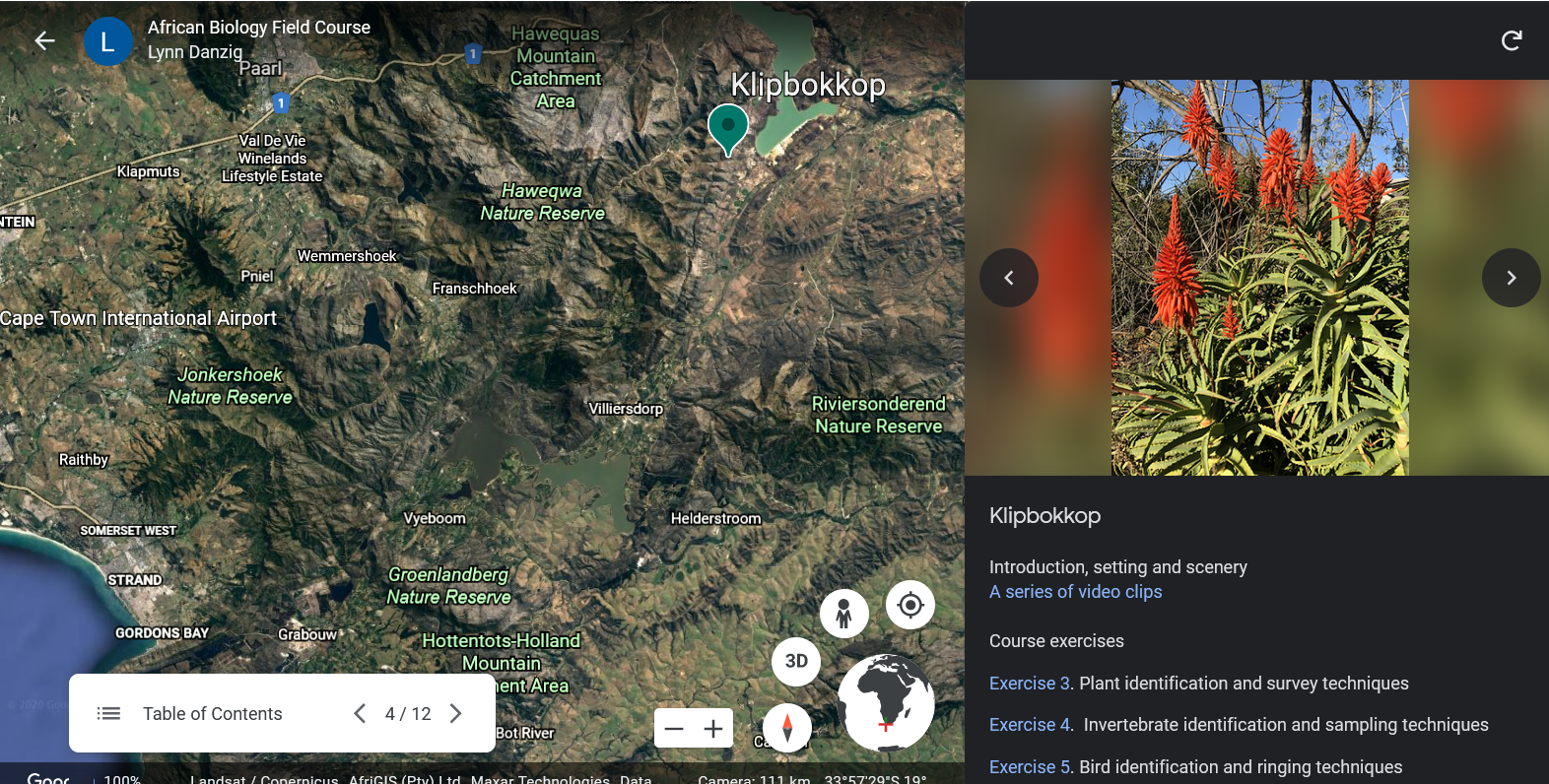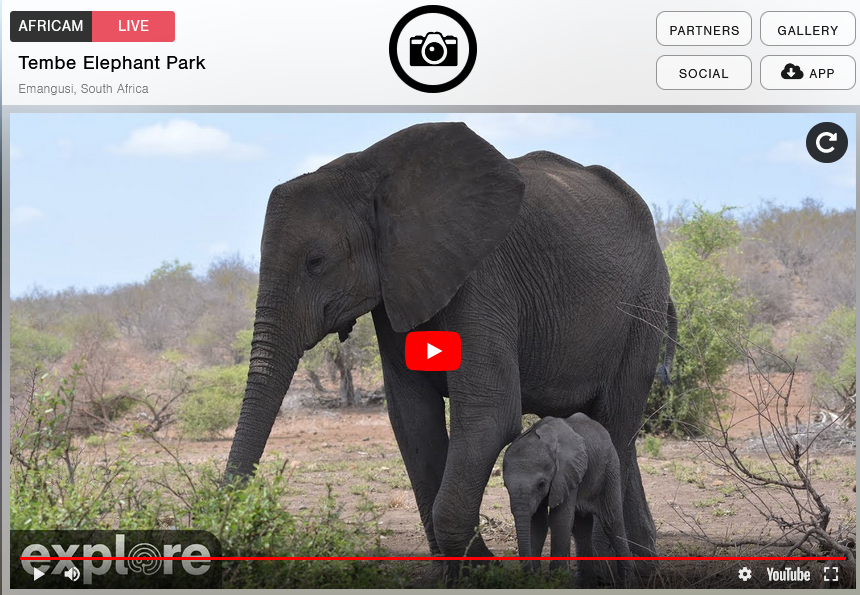
Third year undergraduates in the Department of Life Sciences can opt for an African Biology Field Trip module as part of their degree. Normally, this means that they get the opportunity to visit South Africa for two weeks, to learn more about the practicalities of biological research in some of the Earth’s most spectacular biodiversity hotspots. COVID-19, however, meant that in 2020 students haven’t been able to physically travel abroad for this first term module. Professor Vincent Savolainen, who has organised the course over the past decade, guided efforts to adapt it into a remote offering. He wanted to ensure that students not only to met their learning objectives, but also experienced as much of the nature of the field course as possible via a virtual tour.
In this blog post Kiran Gawali and Lynn Danzig, from the FoNS Ed Tech team, share insights into how they supported Professor Savolainen in rethinking the field trip. As well as working closely with Life Sciences teaching staff, the team hosted six undergraduate student interns over the summer, and keenly emphasise the value of including students in the educational design process.
Pieces of a puzzle
In previous years, students on this course travelled to South Africa and visited a variety of different areas, from a fynbos vegetation in Klipbokkop Mountain Reserve, to wildlife havens like Botlierskop Game Reserve. Technology has played a key role in enabling this course to be run virtually, but in addition to making the most of multimedia, contributions from a range of people across the Faculty have been absolutely vital in piecing bits of the puzzle together.
On top of solutions suggested by the EdTech team, and soundbytes added by the AV team, our FoNS Ed Tech student interns were a really integral part of the design process. Their input – particularly in testing the software on different devices, in different regions, across different time zones – ensured that these new course materials would work as intended for all of our students, no matter where they were studying.
A virtual journey
For the virtual field trip Professor Savolainen wanted to emulate the sense of a journey, so we helped him to implement this idea by creating a Google Earth tour starting at Heathrow Airport, landing in Cape Town, and then visiting a variety of different destinations. Moving eastwards along the coast to Knysna Phantom forest, the tour ends in the majestic natural parks in the north east of the country. Students are required to navigate and explore various locations. They undertake training activities that familiarise them with the ecology, evolution and conservation of South Africa’s fauna and flora, from Fynbos in the Cape to large game animals in savannahs. The broader course teaches field techniques through a series of online exercises, supplementary lectures and workshops with Imperial staff, and also interviews with local African scientists. The conclusion of the module enables students to work independently on their own mini-research project.

Students who have access to Google Earth were able to explore the surroundings of these sites and enhance their virtual experience of the module. There might be a variety of reasons, however, why some students might not have sufficient access to Google Earth, so developing an alternative solution was essential. This is where our interns – who are based all over the world – really became an invaluable part of the process!
They helped to test Google Earth on different devices, in different locations, with varied internet connection strength. They then got creative and developed a PowerPoint version of the tour to support students who could not access Google Earth. This involved designing a slideshow with the look and feel of a Google tour, along with a pop-up navigation bar providing a web-like experience that allowed the user to jump from one place to another from any slide in the slideshow. In this way, our interns’ careful thinking and anticipation of myriad potential user issues directly impacted and improved the user experience of the final product.
One of the techniques that the course teaches is how to get an idea of the numbers of a species in a particular area. The tech alternative to being physically onsite was to observe the animals via webcams, which are common in many wildlife parks in South Africa and elsewhere on the continent. Students who might not be able to access these cameras would work in collaboration with students who could, using screenshots captured from the webcams. In both the Google Earth and PowerPoint formats, we also embedded links to relevant resources on Blackboard, providing supplementary information.
Invaluable interns
The Internship Scheme has been developed not only to give current students an opportunity to gain practical skills and learn more about innovative approaches to teaching, but also to give our teaching colleagues insight into learning directly from the student perspective. This in turn benefits students of the future, whose modules will have been shaped by students before them.
Our interns have personal experience of teaching materials, and bring an enthusiasm, readiness to explore, and creativity to the process that can’t help but positively impact everyone involved. They’re also familiar with combining multimedia assets in a single resource, which really helps the team to push projects further and come up with unique solutions to problems.
We learnt about new features in PowerPoint because of their ideas in using it as part of their slideshow, for example. They also gave excellent feedback on the importance of good quality images. We introduced them to the Creative Commons search tool and collaborated on things like reducing file sizes of images to reduce the load time for slides that would be viewed online.
How we support our interns
The team really values the time, work and enthusiasm our interns put into the scheme, and want them to walk away from the experience having honed graduate attributes and practical skills that will benefit them outside the university environment. We encourage the interns to keep online diaries during their time with us, a process that is intended to support them in becoming reflective practitioners. Reflective writing and applying metacognition skills is really valuable. Finding time for 1-2-1 meetings was challenging, so the diary format also seemed to provide an effective way for students to provide feedback and articulate their thoughts in an informal way. They served as a mechanism for staff to regularly check in with individual students and give personal support in a tight time-frame.
As part of the set-up of the internship scheme we also had a dedicated Teams site, regular Kanban meetings (designed to help teams work efficiently on complicated projects) and an MS planner to keep all processes and progress in check. Students were buddied up with interns who’d already completed the programme, who provided peer support, and helped hone their team working skills through lots of collaborative work across different time zones.
Thank you!
We’d like to say a big thank you to this year’s interns – it’s been wonderful to work with you and we hope you’ve enjoyed and learnt from the process as much as we have! We’re hoping to run the Internship Scheme again next year, so if you’re interested in working with us do look out for announcements in Summer term 2021!
Interested in studying with us?
Find out more about undergraduate courses and postgraduate taught courses in the Department of Life Sciences.